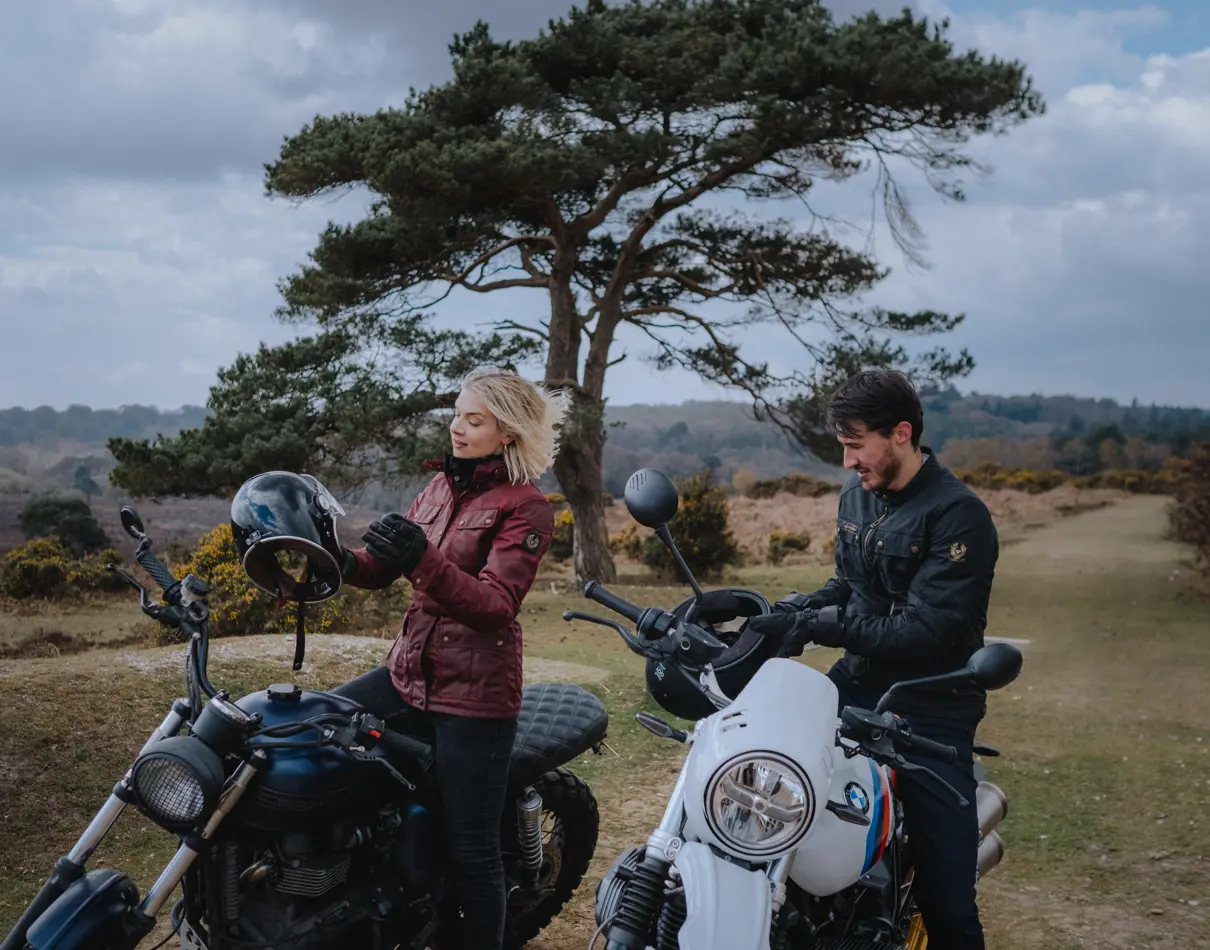How Tight Should a Motorcycle Jacket Fit?
A well-fitted motorcycle jacket is an essential part of every biker’s kit. Whether you’re in professional motorsports or just live and breathe being out on the open road, finding the right one for you is important. With the range of jackets available, you can easily combine style and protection to find your perfect match.
First and foremost, your motorcycle jacket is there for protection, but how do you find the right jacket and get the perfect fit to do just that?

How to choose a motorcycle jacket
The first step is to always do your research. Check out what brands and styles are most popular for your type of riding and why. Make sure to match the jacket to the kind of temperatures and conditions that you’ll be riding in, and don’t forget to look at motorcycle armor.
Look for a jacket that contains D3O impact protection armor. Most motorcycle jackets contain impact protection at the elbow and shoulder as standard, but you may also find ones that feature chest and back protection. Check that the jacket and its armor are CE certified (or UKCA equivalent) in accordance with the EN1621 series of standards. For limb protection, check the impact protection is certified according to EN 1621-1:2012.
D3O’s motorcycle impact protection is certified to the corresponding EN standards and offers the best protection in the world to riders. With armor options including extra breathability and flexibility features, you can get the perfect fitted jacket without compromising on protection.
What are the different types of fit?
Motorcycle jackets come in three main fits: American, European or Race. American or regular fit jackets give more room at the waist, arms and shoulders, while European fits have a tighter, more tapered style around the body, waist and arms. Race fits are designed for riding in a full tuck, sport position with their pre-curved arms and all-over slim style. Even between these styles, there’s still a lot of variation, so shop around to find which you prefer. You should also consider sizing up your jacket if you will be wearing an airbag. This is because you’ll need more room if the airbag deploys.
No matter which fit you opt for, make sure your D3O impact protection sits in the correct place on your body or limbs so you can stay protected whilst riding.
How should a motorcycle jacket fit?
The simple answer is not too tight and not too loose! Too tight and you won’t have the flex or stretch to move, turn and ride like you need to. It’ll be uncomfortable to say the least.
Too loose and the impact protection won’t sit in the right spot, so it won’t be as effective in the event of a crash or fall. With this in mind, you do need a bit of room for clothes underneath, but you should wear a thin base shirt or light thermals if you need added warmth, as there should never be space for multiple thick layers.
A slim, well fitted jacket doesn’t mean compromising on protection either. D3O Ghost Armor™ is the thinnest and most flexible impact protection in the world, while still setting the benchmark for protection for riders. Thanks to its fit-and-forget design, you can slip it into your jacket’s armor pockets and ride in comfort knowing you’re well protected.
How do you size a motorcycle jacket?
Sizing with body measurements is your best bet. Measure your chest, shoulders, waist, and sleeve length then use a size guide or size chart specific to that brand or jacket style to see how it stacks up. If you already have a winning jacket that’s coming to the end of its life, take note of those measurements to hunt down a similar version.
Once you’ve found a contender, check how it feels when you sit on a motorcycle, if you can. Most quality bike apparel shops will have an in-store bike you can hop on to check it’s not too tight, riding up, or restricting your range of motion.
You can also size your impact protection appropriately. D3O offers LP1 Compact and Ghost Armor™ Compact ranges for riders who need smaller options.
Should motorcycle jackets be long or short?
Jackets are usually pretty short on the body. Anything too long will only get in the way, impacting how you sit or use your legs. Not only this, but a long jacket could also be a hazard and get caught in the wheels or around the engine.
However, there are different lengths between styles. For example, a race jacket is usually shorter in the body to suit the forward position, while a regular fit jacket will come down to sit level with the waistband of your pants.
What material should a motorcycle jacket be?
The ultimate debate: textile or leather. The thing is, it comes down to what suits you, feels comfortable, and fits right.
The material of your motorcycle jacket helps to provide abrasion resistance in the event of a fall or crash that sends you skidding. While leather is traditionally very durable and hard wearing, it is more expensive and can be very warm to wear. Some riders may find leather too restrictive, while others, particularly riders who hit the track, like the close and secure fit.
Textile jackets can be cheaper and may have extra features like mesh panels for ventilation or waterproofing. Depending on the riding style they are designed for, textile jackets may also sit a little baggier on the body, so be sure to try before you buy to get the perfect fit.
Whatever material you opt for, make sure the jacket features D3O impact protection to remain guarded while out riding. Explore the range of D3O partners offering motorcycle jackets with our market-leading impact protection armor today: https://www.d3o.com/brands/